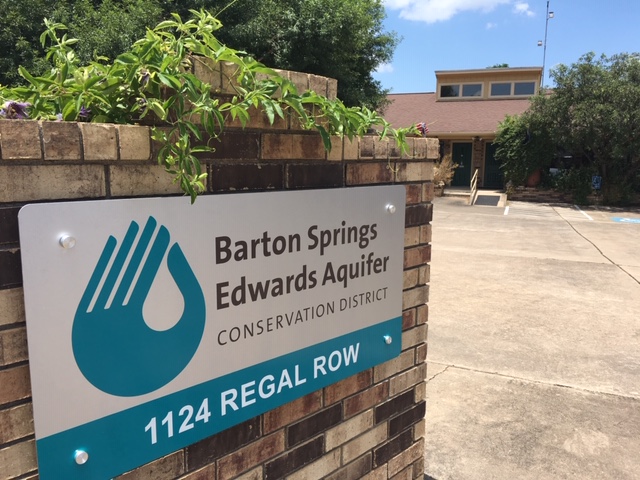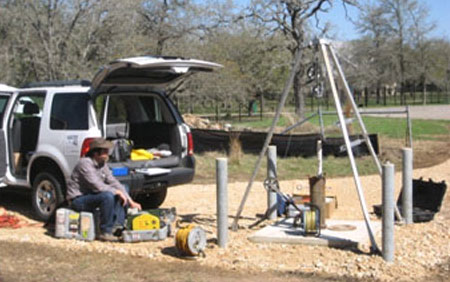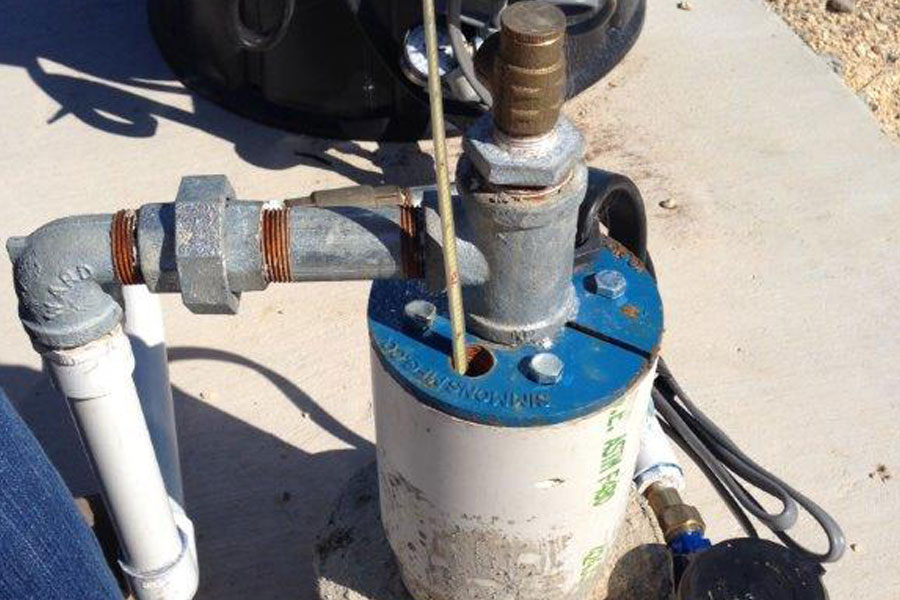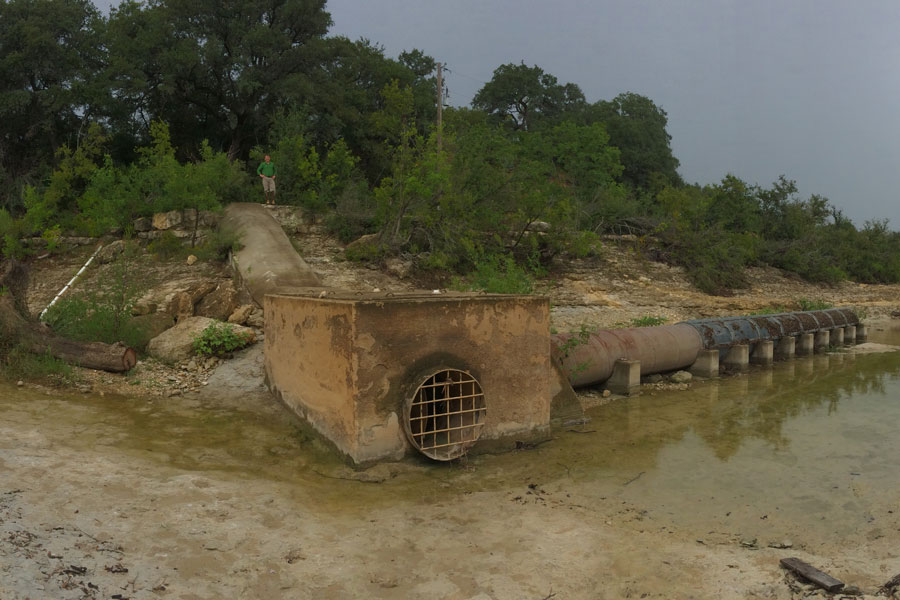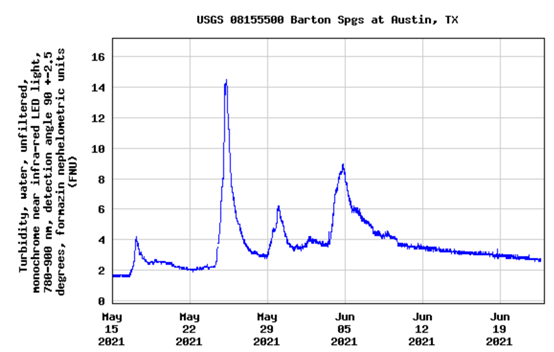Spikes in Turbidity – Aquifer Science Team Article
| Spikes in Turbidity Written by Aquifer Science Team Central Texas experienced storms and heavy rainfall in late May/early June 2021 rapidly filling many creeks and streams with flood water. When these floods occur, runoff transports mud and silt from upland areas into area streams, resulting in brown, muddy water that looks more like a chocolate milk shake than the crystal-clear iconic hill country streams we’ve come to know and love. Many of these muddy streams then flow over the recharge zone and enter the aquifer through sinkholes, swallets, and other karst recharge features. This rapid recharge can result in large quantities of mud and silt entering the groundwater system. This is why BSEACD maintains a best management practice (BMP) structure at Antioch Cave, an important recharge feature in Onion Creek that contributes up to 45% of the flow to Barton Springs. The BMP structure is instrumented with a turbidity meter which triggers a valve to close and shut off recharge to the cave during flood events when turbidity climbs above a specified threshold. After the flood pulse recedes and the creek water becomes cleaner and less muddy, the valve reopens, allowing the cleaner water to recharge the aquifer. However, Antioch Cave is one of countless karst features recharging the Edwards Aquifer, and large quantities of mud and silt still enter the groundwater system through these features. Because of the rapid nature of groundwater flow in the karstic Edwards and Trinity Aquifers, there may be little time for mud, silt, and other contaminants to be naturally filtered out by the aquifer before they make their way to discharge points at wells and springs. As a result, it is not uncommon to see cloudy water in springs such as Barton Springs, or even the kitchen sinks of well owners following heavy rainfall events. After the late May/early June storms there were several spikes in turbidity measured in Barton Springs related to flood pulses caused by heavy rainfall (See figure below). |
|
|
Well owners encountering cloudy well water should avoid drinking it untreated. This could be an indicator that the well intersects a conduit or fracture in the aquifer connected to a surface stream, and may be more likely to contain harmful bacteria and other pathogens associated with surface water bodies. BSEACD recommends that well owners with cloudy water have their water tested for bacteria and e-coli (a list of accredited water quality testing labs and other well owner resources can be found on our District website at the following link: https://bseacd.tombozzly.com/education/well-owners/#wq). |
